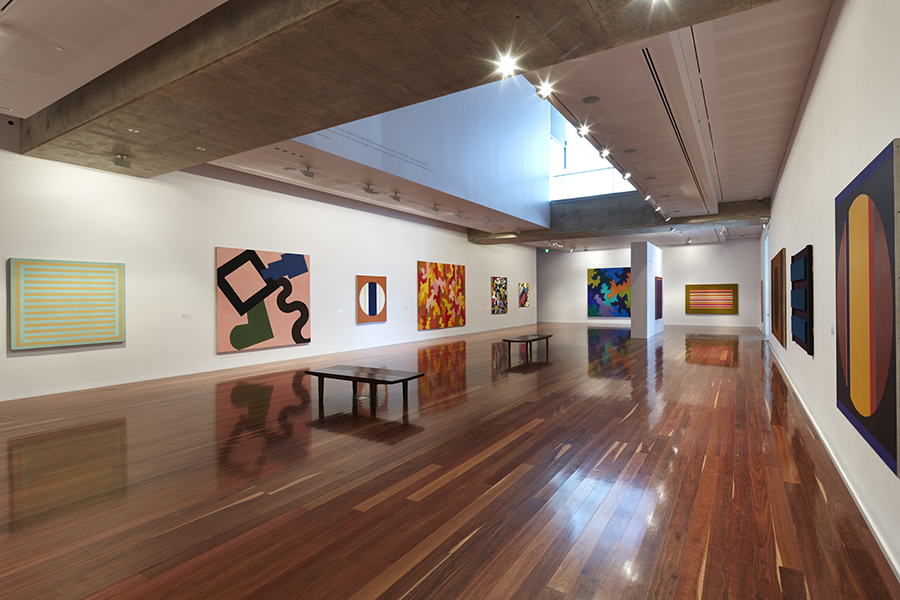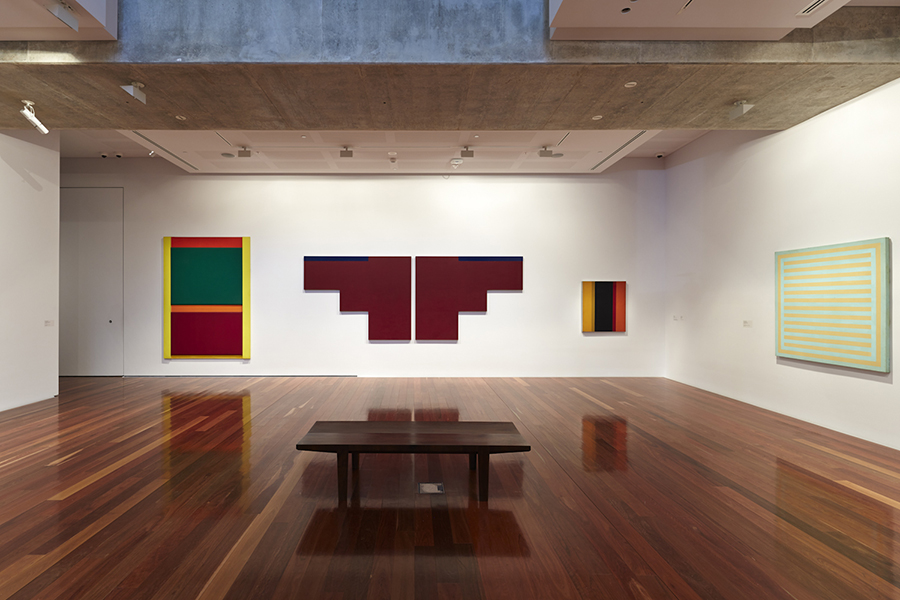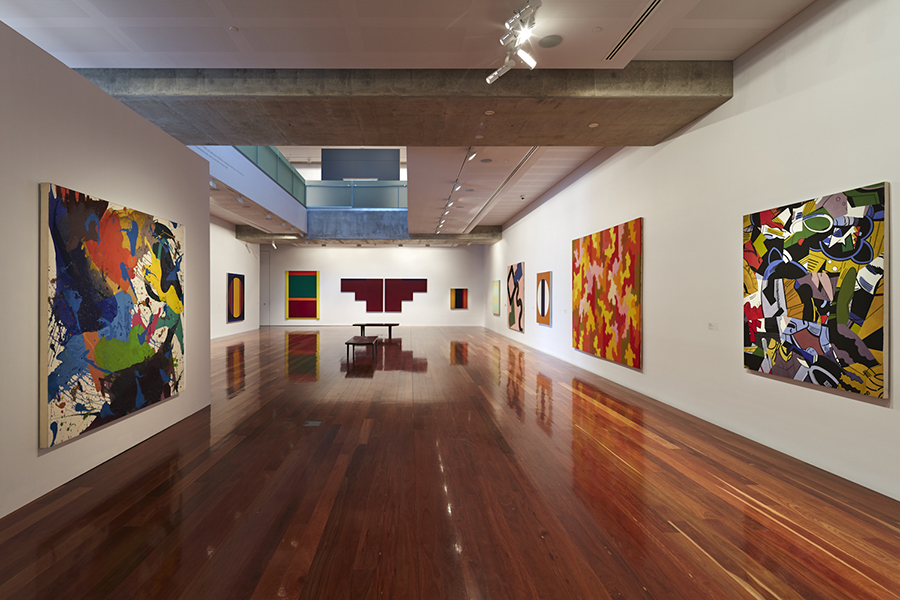2015 - Birth of the Cool
Birth of the Cool / 17 July - 18 September 2015
Image: Birth of the Cool, 2015, installation view, Samstag Museum of Art, University of South Australia. Photography by Sam Noonan.
Birth of the Cool is a selection of works by four painters: David Aspden, Sydney Ball, Michael Johnson and Dick Watkins. It surveys the decade between 1963 and 1973. With the benefit of hindsight, it can be reappraised as a golden era of Australian art, with a brilliant generation emerging in full confidence of its powers, determined to excel at the highest level – not just locally, but in a global context.
The art historian Bernard Smith characterised this generation as the first genuine avant-garde to appear in Australia since the Heidelberg School in the 1880s. Greeted enthusiastically as a liberation from dowdy provincialism and ingrained mediocrity, the trail-blazers of the new generation were cheered on by supporters in the art community and critical establishment but simultaneously howled down by a chorus of detractors.
Hard-edge, colour-field abstraction – their common idiom – is best remembered in connection with the exhibition The Field held in Melbourne and Sydney in 1968, in which Aspden, Ball, Johnson and Watkins participated. The works they exhibited then have gone into the history books and were given pride of place in various museum collections. But since the 1960s hard-edge, colour-field abstraction fell out of curatorial and critical favour... so was it merely the passing fad that its detractors had always alleged?
In the last few years a reappraisal of the art and artists of the 1960s has been in full swing. Birth of the Cool will contribute to this reconsideration by presenting some of the finest, most dazzling works borrowed from private and institutional collections across Australia.
Read the catalogue: Birth of the Cool: David Aspden, Sydney Ball, Michael Johnson and Dick Watkins by Terence Maloon.

Image: Birth of the Cool, 2015, installation view, Samstag Museum of Art, University of South Australia. Photography by Sam Noonan.

Image: Birth of the Cool, 2015, installation view, Samstag Museum of Art, University of South Australia. Photography by Sam Noonan.

Image: Birth of the Cool, 2015, installation view, Samstag Museum of Art, University of South Australia. Photography by Sam Noonan.

Image: Birth of the Cool, 2015, installation view, Samstag Museum of Art, University of South Australia. Photography by Sam Noonan.